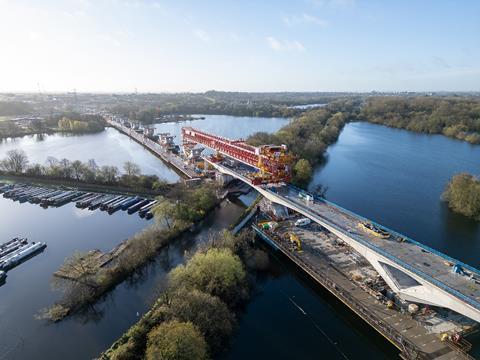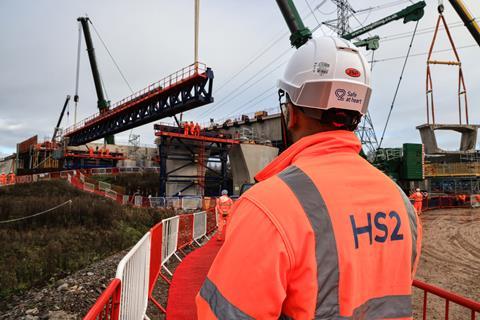
UK: The cancellation of Phase 2 of High Speed 2 means the programme will now not address the capacity issues on the West Coast Main Line north of Birmingham, according to the National Audit Office.
The NAO warns that improving existing infrastructure may be expensive and create major disruption on a busy route, suggesting that the Department for Transport may need to manage demand by incentivising people to travel at different times or to not travel by rail. That may constrain economic growth in the region and increase environmental costs.
HS2: update following cancellation of Phase 2 was published by NAO on July 23. Although the report was compiled under the previous government, it could not be published during the pre-election purdah period.
The report examines whether the DfT and project promoter HS2 Ltd are maximising value for money in their response to the changes to the programme announced by the then Prime Minister Rishi Sunak in October 2023. It does not examine the decision to cancel Phase 2 or how the proposed funding was reallocated.
Findings
The NAO says:
- following the cancellation of Phase 2, DfT and HS2 Ltd quickly identified which parts of their Phase 1 plans they needed to reassess;
- HS2 Ltd estimates that closing down Phase 2 will take three years to complete at a cost of up to £100m;
- disposing of Phase 2 land and property will take several years, and DfT is in the process of establishing a strategy to achieve value for money;
- DfT’s plans for resetting the London Euston station project and surrounding wider development are at an early stage, and it has not yet decided on scope, funding, or governance;
- HS2 Ltd has recently made organisational changes that aim to refocus it on delivery of the Phase 1 railway;
- DfT and HS2 Ltd have different views on how much it will cost to complete the HS2 programme, because they disagree over estimation methodology;
- DfT and HS2 Ltd are developing plans to address the issues that have led to significant cost increases;
- DfT is not yet clear how it will maximise the benefits of the new scope and how it will achieve them;
- DfT will not be able to address capacity issues on the West Coast Main Line north of Birmingham through its revised programme scope.
Recommendations

NAO says DfT should confirm the revised scope for the HS2 programme, develop a shared vision with wider stakeholders on what it would achieve, and agree a revised methodology for estimating costs.
HS2 Ltd should finish developing its lowest cost action plan, complete its organisational changes and monitor how well the changes are effectively supporting it to manage the revised programme.
HM Treasury should agree revised financial controls with DfT and HS2 Ltd including multi-year funding settlements to provide longer-term certainty. It should also consider how to apply the recommendations of NAO’s 2023 report on how best to best protect value for money.
In respect of the Euston project, DfT should develop a programme business case to help stakeholders with decision-making, and make time-critical decisions on progressing necessary works where not making them would create risks to value for money.
In disposing of the land and property that is no longer needed, DfT should be transparent about its value-for-money framework and should identify appropriate opportunities where government could share in any future gains in values.
Outside of the programme, DfT should continue to assess HS2’s role in supporting the wider rail network to realise benefits and consider other options for improving capacity on the West Coast Main Line.
Responses

Responding to the report, HS2 Ltd noted that ‘with hindsight, estimations made prior to full construction by government and HS2 Ltd were overly optimistic and delivery performance by HS2 Ltd and its supply chain has not been able to reach these ambitious expectations’.
Cost pressures included significant inflation, delays in planning and environmental consents, major scope changes and annual funding constraints.
HS2 Ltd said it was making ‘significant’ changes, including improved data and reporting on schedules and costs, creation of the new role of Chief Railway Officer with responsibility for integration and delivery, and renegotiating the main works civils contracts to create better incentives and improve cost certainty.
Commenting on the NAO report, Railway Industry Association CEO Darren Caplan said the new government needed to set out a plan for how more capacity could be provided north of Birmingham. ’To get the full benefits of HS2 investment you ultimately need to build the full scheme’, he suggested. ‘With large parts of the planned HS2 scheme scrapped, the problems of a lack of current and future capacity on the UK’s north-south railway corridors remain.’
The High Speed Rail Group said ‘the plan the incoming Labour government is inheriting — a truncated HS2, and a West Coast Main Line operating at capacity — is not going to help grow the national economy, nor is it going to allow train performance on the West Coast to return to acceptable levels.
‘Most of the suggested alternatives to delivering Phase 2a between the West Midlands and Crewe will take longer to implement, and add risk and uncertainty, which are the enemies of efficient major project delivery’, HSRG added. ‘And no plan can be considered final until the line reaches Euston.’



